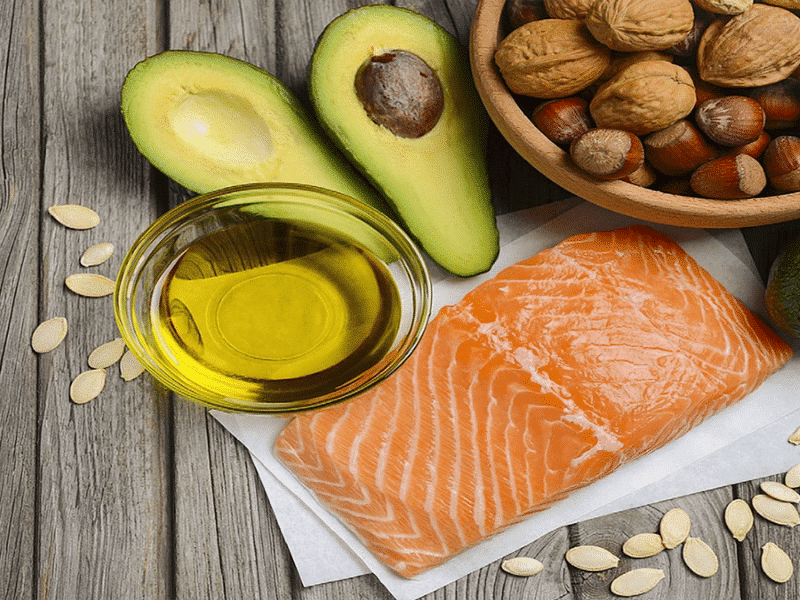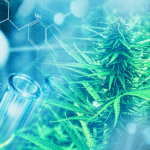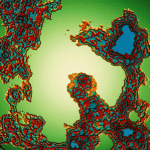A 2002 article in the journal Biomedicine and Pharmacotherapy1 was one of the first to call attention to a health problem that has only grown over the last two decades (as evidenced by the paper’s more than 3,900 citations to date): an imbalance of omega-6 and omega-3 essential fatty acids in the Western diet.
Author Artemis Simopoulos of the Center for Genetics, Nutrition, and Health in Washington, D.C., suggests that humans evolved eating roughly equal amounts of omega-6 and omega-3. In the typical Western diet, however, the ratio is at least 15 to 1. Today we eat less fish, nuts, berries, and green leafy vegetables, all of which are prime sources of omega-3, and far more cereal grains, which are high in omega-6.
Just as soy and corn have displaced nuts and berries in our diets, omega-6 has essentially displaced omega-3 in our bodies. It’s a zero-sum game with serious health consequences. This dramatic departure from the diet to which humans are genetically adapted – characterized by a large and relatively sudden disparity in omega fatty acid intake, as Simopoulos frames it – contributes to chronic health conditions increasingly afflicting the United States and other Western countries like hypertension, obesity, diabetes, and many cancers.
Her observations – and prescient reference to the concept of a “therapeutic dose of omega-3 fatty acids” – seemed to anticipate the emergence of the modern global omega-3 supplement industry, which was valued at $5.18 billion in 2019 and continues to grow every year.2
The Endocannabinoid Connection
What Simopoulos didn’t understand at the time, and indeed no one did, was the role in all this of the endocannabinoid system (ECS). The ECS had been named for the first time in the scientific literature only a few years earlier in 1996,3 and isn’t referenced at all in her paper.
Researchers have since learned a lot about the role of the ECS in mediating the health effects of “essential” omega fatty acids, so named because they can’t be produced by the body in sufficient amounts and therefore must be ingested. These advances could in turn lead toward other potential therapeutics and interventions that specifically target the ECS to help treat chronic diseases.
Though there’s admittedly far more to the story – a story that gets increasingly complex the longer you follow it – omega fatty acids interact with the ECS in two key ways. The first has to do with endocannabinoids themselves, which are in fact byproducts of omega fatty acids. Endocannabinoids are compounds that bind to the cannabinoid receptors CB1 and CB2, among other receptors and targets in the body.
The second way omega fatty acids interact with the ECS specifically involves the CB1 receptor, which is concentrated in the brain and nervous system but also plays a role in inflammatory processes. And inflammation, as we now know, is central to many chronic diseases.
Arachidonic Acid & Synaptamide
The two best-studied endocannabinoids, commonly known as anandamide and 2-AG, are chemically derived from arachidonic acid (AA), one of four major types of omega-6 fatty acids. For anyone even loosely familiar with the role that the ECS plays in maintaining health and homeostasis, the importance of arachidonic acid as a building block of anandamide and 2-AG should be enough to indicate that omega-6 fatty acids, also found in meat, milk, eggs, and other sources, are not harmful in and of themselves.
The key, it turns out, is balance. Which brings us back to omega-3. Scientists now understand that two of the three main types of omega-3 fatty acids involved in human physiology – eicosapentaenoic acid (EPA) and docosahexaenoic acid (DHA) – also produce derivatives that bind to the CB1 and CB2 receptors. And because they bind to cannabinoid receptors, these omega-3 derivatives are also understood to be endocannabinoids.
These recently discovered4 endocannabinoids – EPG, EPEA, DPG, and DHEA – aren’t quite household names in the cannabis or nutrition communities yet, but perhaps someday they will be. DHEA is also known as “synaptamide” because it has been shown to promote neurogenesis, neuron development, and synaptogenesis.5 Scientists still have a lot to learn about how these omega-3 derived endocannabinoids function in the body.
“There is a lot of interest in the omega-3 fatty-acid-derived endocannabinoids,” University of Illinois professor Aditi Das told Project CBD. Das is helping lead the global charge to identify and characterize these intriguing compounds. “Omega-3 endocannabinoids right now are very mysterious, except for synaptamide, which people have done a lot of work on.”
Zero Sum Game
At the very least, it’s clear that the two “classic” endocannabinoids (anandamide & 2-AG) derived from omega-6 arachidonic acid and the four recently identified endocannabinoids derived from omega-3 DHA and EHPA have distinct physiological properties, and thus different effects on the body. One key difference with implications for chronic disease is that the omega-3-derived endocannabinoids appear to suppress inflammation,6 while their omega-6-derived counterparts promote it. (It’s worth noting that inflammation is not always bad, since it serves to fight injury and infection.)
In addition to binding directly with the CB1 and CB2 receptors, both sets of endocannabinoids also compete for the same biosynthetic enzymes, which are needed to produce them in the first place from their fatty acid precursors. That’s why the balance between omega-3 and omega-6 in the diet can be seen as a zero-sum game: when one goes up, the other goes down.
And this isn’t just in theory; researchers have watched it happen: “A large body of evidence, comprising of in vitro-, animal- and human data, underscores that increasing the supply of omega-3 fatty acids results in decreased concentrations of anandamide and 2-AG, whereas concentrations of DHEA and EPEA increase,” Dutch scientists reported in a 2019 article exploring the anti-inflammatory effects of omega-3-derived endocannabinoids.7
This push and pull explains how an individual’s dietary omega-3/omega-6 ratio affects not only inflammatory processes but also the balance and tone of the entire endocannabinoid system. And, since the ECS works to maintain homeostasis (another word for balance) within the body as a whole, this relationship goes a long way toward explaining Simopoulos’ realization back in 2002 that when our omega fatty acid intake deviates too far from the ratio with which we evolved, everything from our brain to our gut may be thrown off balance.
Omega-3 Deficiency
But that’s not the only way that omega fatty acids and the ECS interact. The second avenue, as noted above, leads straight through CB1. And it also has widespread implications for health, given the CB1 receptor’s presence in the brain and central nervous system, as well as in other organs and tissues, including the heart, liver, kidneys, eyes, and skin.
In the last decade, researchers have discovered that dietary omega-3 fatty acid intake has a beneficial effect on CB1 receptor function8 – and, more to the point, that its relative absence may contribute to major impairment of the endocannabinoid system.
“Dietary deficiency of omega-3 has been shown to prohibit proper functioning of the CB1 receptor, whereas a diet rich in omega-3 increases the sensitivity of CB1,” write the authors of a November 2020 review in the European Journal of Neuroscience.9 “These findings support the notion that omega-3 is crucial for the modulatory functions of the endocannabinoid system.”
“Nutrition Is All About Balances”
To return to Simopoulos and her 2002 article one last time, she doesn’t suggest that all humans must adopt a 1:1 balance in order to be healthy. Rather, she notes that a ratio of omega-6 to omega-3 around 2:1 or 3:1 seems to be protective against harmful inflammation and a variety of chronic diseases including cancer. In general, she concludes, the lower the ratio the better.
Nutritionists today seem to agree, recommending a dietary ratio between 1:1 and 4:1. (Hemp seeds, interestingly, have a ratio of about 3:1.) But whatever the precise number, Renger Witkamp of Wageningen University in the Netherlands, who studies the intersection of nutrition and pharmacology, said he believes that omega fatty acids, the ECS, and even CBD itself, the “promiscuous” plant cannabinoid that acts on the body in a wide variety of ways – all have something important to teach us about health. And they also hold important lessons for the development of therapeutics designed to treat chronic disease, he says.
“Nutrition is all about balances. That’s how our biology works. If you look at chronic diseases, the diseases of our era, they are lifestyle-related diseases. They originate from imbalances between molecules, and not because of one molecule. So trying to cure these diseases with just one single target, and one molecule, is in my opinion not the right way. And there,” Witkamp concludes, “the endocannabinoid system fits very nicely.”
Nate Seltenrich, Project CBD contributing writer, is the author of the column Bridging the Gap. An independent science journalist based in the San Francisco Bay Area, he covers a wide range of subjects, including environmental health, neuroscience, and pharmacology. © Copyright, Project CBD. May not be reprinted without permission.
Sources
- https://pubmed.ncbi.nlm.nih.gov/12442909/
- https://www.grandviewresearch.com/industry-analysis/omega-3-supplement-m…
- https://pubmed.ncbi.nlm.nih.gov/8894848/
- https://www.ncbi.nlm.nih.gov/pmc/articles/PMC6685292/
- https://www.ncbi.nlm.nih.gov/pmc/articles/PMC3541447/
- https://pubmed.ncbi.nlm.nih.gov/28687674/
- https://pubmed.ncbi.nlm.nih.gov/31260750/
- https://pubmed.ncbi.nlm.nih.gov/21278728/
- https://onlinelibrary.wiley.com/doi/abs/10.1111/ejn.15023
Recommended Readings
Diet & the Endocannabinoid System
New research on how the ECS impacts hunger, diet, digestion, and energy metabolism.
Olive Oil, Cancer & the CB-1 Receptor
Olive oil’s many health benefits may be mediated by the endocannabinoid system.
Leafy Greens & Diabetes
β-caryophyllene is a terpene present in cannabis as well as many dark green, leafy vegetables.










